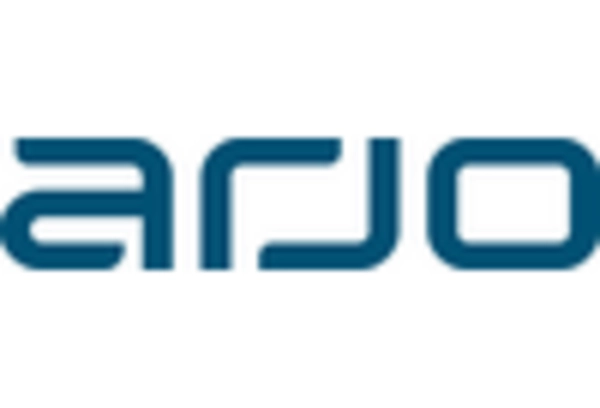Increased Focus on Patient-Centric Care
The Smart Medical Beds Market is witnessing a shift towards patient-centric care, which emphasizes the importance of patient comfort and satisfaction. Healthcare providers are increasingly recognizing that a comfortable environment can lead to better recovery outcomes. Smart medical beds are designed with features that cater to individual patient needs, such as adjustable firmness and temperature control. This focus on patient-centric care aligns with broader healthcare trends aimed at improving the overall patient experience. As hospitals and care facilities prioritize patient satisfaction, the demand for smart medical beds is likely to rise. This trend not only enhances the quality of care but also positions the Smart Medical Beds Market for sustained growth in the coming years.
Rising Demand for Advanced Healthcare Solutions
The Smart Medical Beds Market experiences a notable surge in demand for advanced healthcare solutions. As healthcare facilities strive to enhance patient care, the integration of smart medical beds becomes increasingly vital. These beds offer features such as automated adjustments, monitoring systems, and connectivity to health records, which are essential for improving patient outcomes. According to recent data, the market for smart medical beds is projected to grow at a compound annual growth rate of approximately 15% over the next five years. This growth is driven by the need for hospitals to adopt innovative technologies that facilitate better patient management and operational efficiency. Consequently, the rising demand for advanced healthcare solutions significantly propels the Smart Medical Beds Market forward.
Technological Advancements in Medical Equipment
Technological advancements play a crucial role in shaping the Smart Medical Beds Market. Innovations in sensor technology, artificial intelligence, and data analytics are transforming the capabilities of smart medical beds. These beds can now monitor vital signs, adjust positions automatically, and even alert healthcare providers in case of emergencies. The integration of such technologies not only enhances patient safety but also streamlines hospital operations. Market data suggests that the adoption of these advanced features is expected to increase, with a projected market growth rate of 12% annually. As healthcare facilities invest in modernizing their equipment, the Smart Medical Beds Market stands to gain significantly from these technological advancements.
Aging Population and Increased Chronic Illnesses
The Smart Medical Beds Market is significantly influenced by the aging population and the rising prevalence of chronic illnesses. As the global demographic shifts towards an older population, the need for specialized healthcare solutions becomes more pronounced. Older adults often require long-term care, which necessitates the use of smart medical beds equipped with features that enhance comfort and safety. Furthermore, chronic illnesses such as diabetes and heart disease are on the rise, leading to increased hospital admissions and extended stays. This trend indicates a growing market for smart medical beds, which are designed to cater to the specific needs of these patients. The Smart Medical Beds Market is thus positioned to benefit from these demographic changes, as healthcare providers seek to improve patient care and reduce hospital readmission rates.
Regulatory Support and Funding for Healthcare Innovations
Regulatory support and funding initiatives are pivotal in driving the Smart Medical Beds Market. Governments and health organizations are increasingly investing in healthcare innovations to improve patient care and operational efficiency. Funding programs aimed at modernizing healthcare infrastructure often include provisions for advanced medical equipment, including smart medical beds. This financial backing encourages healthcare facilities to adopt new technologies that enhance patient monitoring and safety. Additionally, regulatory bodies are establishing guidelines that promote the use of smart medical beds, further supporting their integration into healthcare systems. As a result, the Smart Medical Beds Market is likely to benefit from these supportive measures, fostering an environment conducive to growth and innovation.


















Leave a Comment